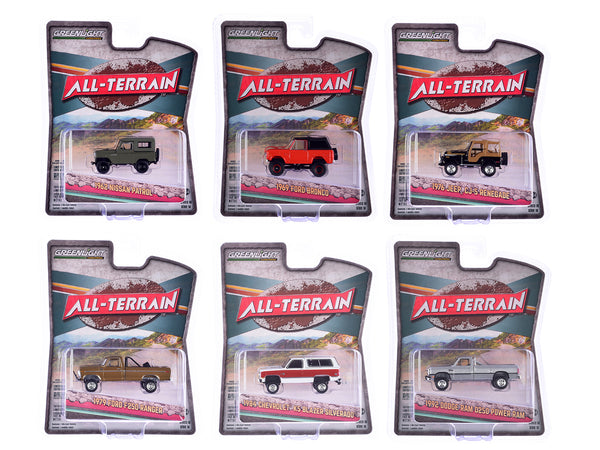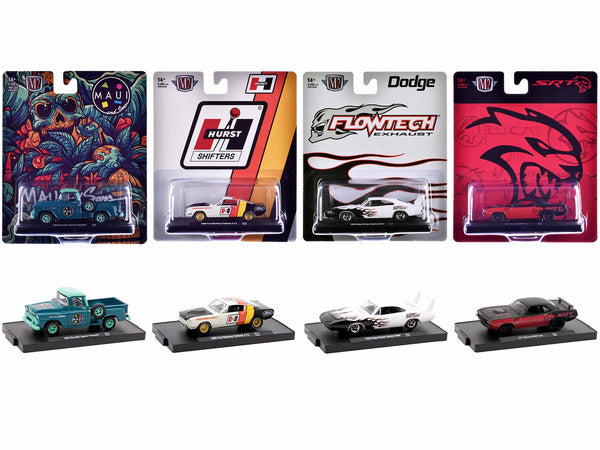
The Best Mid-Engine Sports Cars of All Time
Related Products
Share
Introduction
When it comes to sports cars, one design element that stands out is the mid-engine layout. Placing the engine behind the driver not only enhances performance but also improves handling and balance. Over the years, several iconic mid-engine sports cars have graced the automotive industry, leaving enthusiasts in awe. In this article, we will explore some of the best mid-engine sports cars of all time.
Porsche 911
The Porsche 911 has long been regarded as one of the greatest sports cars ever produced. While early models were rear-engine, Porsche introduced the 911 RSR in 1973, and it recently marked its transition to a mid-engine layout. The mid-engine 911 RSR showcased improved agility and better weight distribution, cementing its position as an all-time classic.
Ferrari F430
Another legendary mid-engine sports car is the Ferrari F430. Launched in 2004, the F430 boasted a 4.3-liter V8 engine, delivering blistering acceleration and an intoxicating exhaust note. Its precise handling and aerodynamic design made it a favorite among car enthusiasts, earning it a spot on this list.
Lamborghini Huracan
A true masterpiece from Lamborghini, the Huracan represents the epitome of mid-engine sports cars. With its sleek and aggressive styling, the Huracan turns heads wherever it goes. Powered by a monstrous V10 engine, it offers an unparalleled driving experience that combines power, speed, and precision.
McLaren F1
No list of the best mid-engine sports cars would be complete without the iconic McLaren F1. Released in 1992, the F1 was a game-changer, featuring a three-seat layout with the driver seated in the center. Its top speed of 240 mph made it the fastest production car of its time. To this day, the McLaren F1 remains a benchmark for automotive engineering.
Conclusion
From the timeless Porsche 911 to the groundbreaking McLaren F1, mid-engine sports cars have continuously pushed the boundaries of performance and design. These remarkable machines have captivated the hearts of car enthusiasts worldwide, and their legacy will endure for generations to come.
Q/A
Question 1.
What are some of the best mid-engine sports cars available on any budget?
Certainly! When it comes to mid-engine sports cars that cater to a range of budgets, several standout options come to mind. Some of the top choices in this category include the iconic Ferrari F430 with a manual transmission, the agile Toyota MR2, the lightweight and nimble Lotus Elise, the powerful Porsche 718 Spyder RS, the luxurious Audi R8, the stylish Alfa Romeo 4C, the classic Chevrolet Corvette, and the fun and compact Honda Beat. These vehicles offer a mix of performance, handling, and design that appeals to enthusiasts looking for mid-engine sports cars across various price points.
Question 2.
What are the standout features of the compact yet exotic Honda Beat in terms of design and performance?
The Honda Beat is a compact yet exotic vehicle that showcases impressive design and performance features. Sporting a 660cc three-cylinder engine equipped with independent throttle bodies and an 8,500rpm redline, this small car is a powerhouse. Its agility is further enhanced by independent suspension on all corners, providing a smooth and responsive driving experience. Accelerating from 0-62mph in just nine seconds, the Honda Beat is no slouch on the road, offering a thrilling ride for enthusiasts. However, it does come with some limitations, such as minimal storage space, the absence of a stereo system, and an engine that can be quite vocal at 6,000rpm while cruising at 60mph.
Question 3.
How does the Chevrolet Corvette compare to European supercars in terms of performance and value?
The Chevrolet Corvette distinguishes itself from European supercars with its new mid-engined layout and flat-plane crank engine, setting the stage for a robust challenge against its prestigious counterparts. While the Corvette may not stand out as the immediate choice for discerning buyers in the luxury supercar segment, its performance capabilities and relative affordability make it a compelling option for enthusiasts seeking a high-performance vehicle. By benchmarking itself against renowned European supercars like the Ferrari 458, the Corvette underscores its commitment to performance excellence. For buyers looking to maximize value, waiting a few years may present an opportunity to acquire the Corvette at a more competitive price point, making its perceived shortcomings in areas like interior quality and brand image more forgivable. Ultimately, the Chevrolet Corvette makes a noteworthy case for itself as a formidable contender in the realm of European supercars, offering a blend of performance and value that can be particularly appealing to savvy buyers willing to wait for the right opportunity.
Question 4.
What unique features and drawbacks are associated with the Alfa Romeo 4C?
The Alfa Romeo 4C showcases a high-tech chassis that is marginally lighter than the aged Lotus Elise's aluminum tub. Despite this, the steering system is described as heavy, lacking in feedback, and overly sensitive to changes in camber. Furthermore, the turbocharged 1,750cc engine is noted for its quick performance but may fall short of being exceptional. Notwithstanding these drawbacks, the Alfa Romeo 4C is praised for its stunning appearance and the inherent passion that embodies the essence of the brand, which is said to surpass the average car in terms of aesthetics and character.
Question 5.
What enhancements does the Porsche 718 Spyder RS offer over the standard Boxster model?
The Porsche 718 Spyder RS introduces significant enhancements over the standard Boxster model. One key improvement is the addition of a high-powered engine borrowed from the 911 GT3, providing the chassis with the power it lacked previously. The Spyder RS boasts a 500PS (368kW) 4.0-liter engine, which not only offers impressive performance but also produces a captivating sound experience for the driver. With a 0-62mph acceleration time of 3.4 seconds and a top speed of 191mph, the Spyder RS now delivers supercar-level performance. Additionally, the Spyder RS includes a drop-top roof design, allowing drivers to enjoy the thrilling engine sound firsthand. However, it's worth noting that the manually folding roof on the Spyder RS is less convenient compared to the standard Boxster's roof mechanism.
Question 6.
What makes the Lotus Elise a standout choice for enthusiasts in terms of driving experience and weight management?
The Lotus Elise stands out as a top choice for driving enthusiasts due to its exceptional driving experience and emphasis on weight management. Weighing just around 700kg, the Elise demonstrates the paramount importance of weight in dictating a car's performance and handling characteristics. Even in its basic form with 118PS (87kW) of power, the Elise feels incredibly quick and agile thanks to its lightweight construction. The all-aluminium K-series engine provides powerful acceleration while maintaining exceptional balance and nimbleness on the road. With features like unassisted steering and responsive brakes, the Elise allows drivers to directly experience the benefits of a lightweight chassis, delivering precise feedback and connection to the road like no other. Overall, the Lotus Elise exemplifies the harmonious relationship between weight management and driving dynamics, making it a standout choice for enthusiasts seeking a truly exhilarating driving experience.
Question 7.
What are the key features and performance characteristics of the Ferrari F430 manual?
The Ferrari F430 manual, introduced in 2004, is a standout model for enthusiasts who prefer manual transmission over newer hybridized versions. This model hails from an era where analog cars blended experience-enhancing electronics with traditional characteristics. Unlike the latest models with features like electric power steering and particulate filters, the F430 manual showcases a flat-plane-crank V8 engine that delivers the iconic Modena scream and impressive performance reaching nearly 200mph. Additionally, the vehicle incorporates Ferrari's innovative eDiff system, which elevates the driving experience by making even an average driver feel like a skilled hero behind the wheel. For those seeking an exceptional driving experience, finding a variant of the F430 manual with a gated manual gearbox is key, offering a close-to-perfect motoring experience that embodies driving nirvana.





